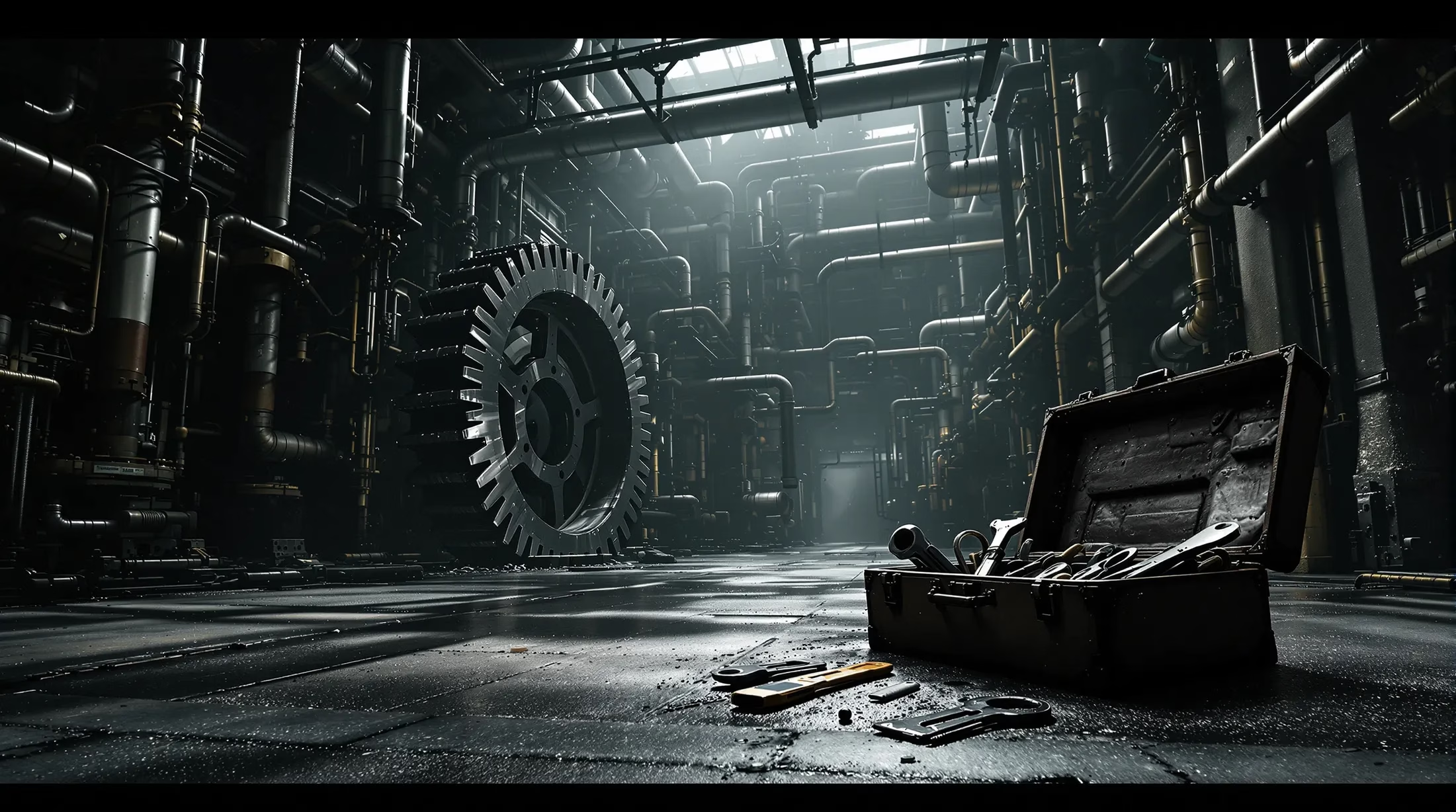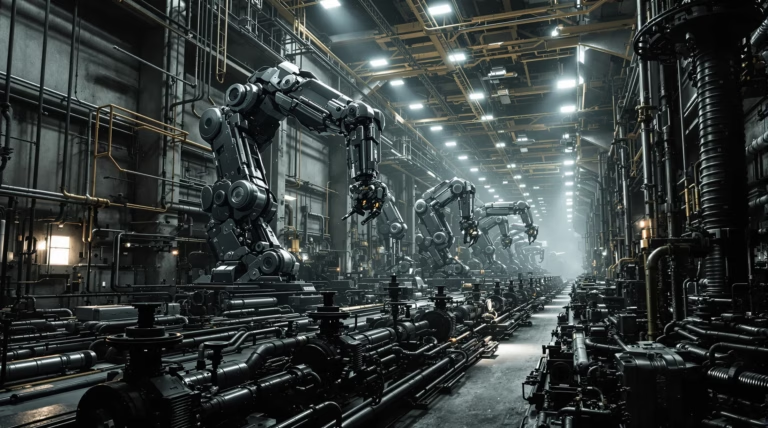Factory Equipment Maintenance: Essential Tips for Optimal Performance
In today’s competitive manufacturing landscape, effective factory equipment maintenance can make the difference between operational excellence and costly inefficiencies. Let’s explore how proper maintenance strategies can optimize your manufacturing processes and boost your bottom line.
Understanding Factory Equipment Maintenance
Factory equipment maintenance, or industrial maintenance, encompasses all activities that maintain manufacturing assets at peak efficiency. This process directly impacts production capacity, product quality, and profitability. Modern maintenance isn’t merely about repairs—it’s a strategic investment that drives operational success.
Successful maintenance programs balance optimal equipment performance with cost control. Through structured protocols, manufacturers can:
- Extend machinery lifespan significantly
- Minimize unexpected downtime
- Maintain consistent output quality
- Reduce long-term operational costs
- Improve overall manufacturing efficiency
The Importance of Equipment Maintenance in Manufacturing
Regular maintenance delivers multiple critical benefits across the production ecosystem. Studies demonstrate that properly maintained equipment experiences 30-50% fewer failures compared to reactive maintenance models.
| Benefit | Impact |
|---|---|
| Machinery Reliability | Reduced unexpected breakdowns and production bottlenecks |
| Product Quality | Tighter tolerances and fewer rejects |
| Operational Efficiency | Lower energy consumption and higher production speeds |
| Asset Lifespan | Extended equipment life and delayed replacement costs |
Key Maintenance Strategies for Optimal Performance
Success begins with implementing a Computerized Maintenance Management System (CMMS), which centralizes maintenance operations and enables proactive approaches. The ideal maintenance strategy portfolio includes:
- Preventive maintenance – scheduled inspections and service based on time or usage intervals
- Predictive maintenance – data analysis to identify performance deterioration
- Condition-based maintenance – real-time monitoring for anomaly detection
Exploring Different Maintenance Strategies
Strategic maintenance selection significantly impacts operational efficiency and profitability. The most effective facilities combine multiple approaches based on equipment needs, production demands, and available resources.
Preventive Maintenance: Scheduled Success
Operating on time or usage-based schedules, preventive maintenance creates systematic frameworks for routine care. This approach yields substantial benefits:
- Minimized emergency repairs
- Reduced unexpected downtime
- Enhanced equipment reliability
- More predictable maintenance budgets
- Extended equipment lifespan
Predictive Maintenance: Data-Driven Decisions
This advanced approach leverages analytics to determine precise maintenance timing. Through IoT devices and sophisticated analysis, teams can monitor:
- Vibration signatures
- Thermal patterns
- Acoustic emissions
- Electrical consumption
- Performance trends
Organizations typically achieve 25-30% reductions in maintenance costs and 70-75% decreases in breakdown frequency through predictive maintenance implementation.
Condition-Based Maintenance: Real-Time Monitoring
Condition-based maintenance leverages continuous real-time monitoring to determine optimal maintenance timing based on actual equipment status rather than fixed schedules. Through specialized sensors and monitoring systems, maintenance teams track vital parameters including:
- Temperature fluctuations
- Pressure levels
- Vibration patterns
- Flow rates
- Electrical consumption trends
Implementation requires investment in advanced monitoring technology:
| Monitoring Tool | Primary Function |
|---|---|
| Heat Sensors | Detect temperature anomalies |
| Vibration Analyzers | Monitor mechanical stability |
| Ultrasonic Detectors | Identify internal wear patterns |
| Oil Analysis Equipment | Assess lubricant condition |
Reactive Maintenance: When to Use It
While proactive strategies dominate modern maintenance, reactive maintenance remains viable for specific scenarios. This run-to-failure approach is most appropriate for:
- Non-critical equipment with minimal failure impact
- Components with low replacement costs
- Systems without safety implications
- Redundant equipment
- Easily replaceable parts
Prescriptive Maintenance: Optimizing Actions
Prescriptive maintenance represents the pinnacle of maintenance evolution, combining real-time monitoring with artificial intelligence to automatically generate optimal maintenance solutions. This sophisticated system evaluates:
- Multiple intervention options
- Cost-benefit analyses
- Risk assessments
- Production schedule impacts
- Resource availability
Implementing Effective Maintenance Programs
A well-structured maintenance program combines technology, skilled personnel, and optimized processes to deliver measurable improvements. Organizations implementing effective programs typically achieve:
- 20-30% reduction in equipment downtime
- 12-18% improvement in operational efficiency
- Significant decrease in emergency repairs
- Enhanced production reliability
- Improved financial performance
The Role of CMMS in Maintenance Management
A Computerized Maintenance Management System (CMMS) functions as the cornerstone of modern maintenance operations, delivering substantial benefits:
| Benefit | Impact |
|---|---|
| Repair Time | 28% reduction |
| Maintenance Backlog | 20% decrease |
| Spare Parts Management | 17% efficiency improvement |
| Work Order Management | Automated generation and tracking |
Training and Development for Maintenance Teams
Comprehensive training and development programs represent one of the highest-return investments in manufacturing operations. Modern equipment’s increasing complexity through automation, IoT connectivity, and sophisticated control systems demands continuously updated skillsets. Organizations with structured training programs achieve:
- 45% faster problem resolution times
- 23% fewer repeat equipment failures
- Enhanced employee engagement and retention
- Improved maintenance effectiveness
- Greater workforce flexibility
| Training Component | Primary Focus |
|---|---|
| Technical Training | Equipment systems and components |
| Diagnostic Training | Root cause analysis and troubleshooting |
| Safety Training | Proper maintenance procedures and protocols |
| Digital Literacy | CMMS systems and diagnostic tools |
| Cross-Training | Multi-equipment maintenance capabilities |
Measuring Success: Key Maintenance Metrics
Effective maintenance management relies on comprehensive performance measurement to drive operational excellence. These quantifiable indicators provide critical insights into program effectiveness, equipment reliability, and cost efficiency, directly impacting production capacity and product quality.
Defining and Tracking Maintenance Metrics
Essential maintenance performance indicators include:
- Overall Equipment Effectiveness (OEE) – combines availability, performance, and quality metrics
- Mean Time Between Failures (MTBF) – measures equipment reliability
- Mean Time To Repair (MTTR) – assesses maintenance response efficiency
- Maintenance unit cost – total maintenance expenses per unit produced
- Equipment downtime rates
Implementation success requires integrated CMMS platforms for automatic data capture, standardized reporting formats, and regular performance reviews based on industry benchmarks and historical data.
Using Metrics to Drive Continuous Improvement
Transforming metrics into improvement drivers requires systematic analysis and action planning. Successful organizations implement:
- Regular cross-functional metric review sessions
- Root cause analysis of performance issues
- Targeted improvement initiatives
- Incremental performance targets
- Connection between maintenance metrics and operational KPIs
Advanced facilities leverage these metrics to standardize maintenance practices, optimize repair procedures, and demonstrate the direct impact of equipment reliability on production capacity and financial performance.




